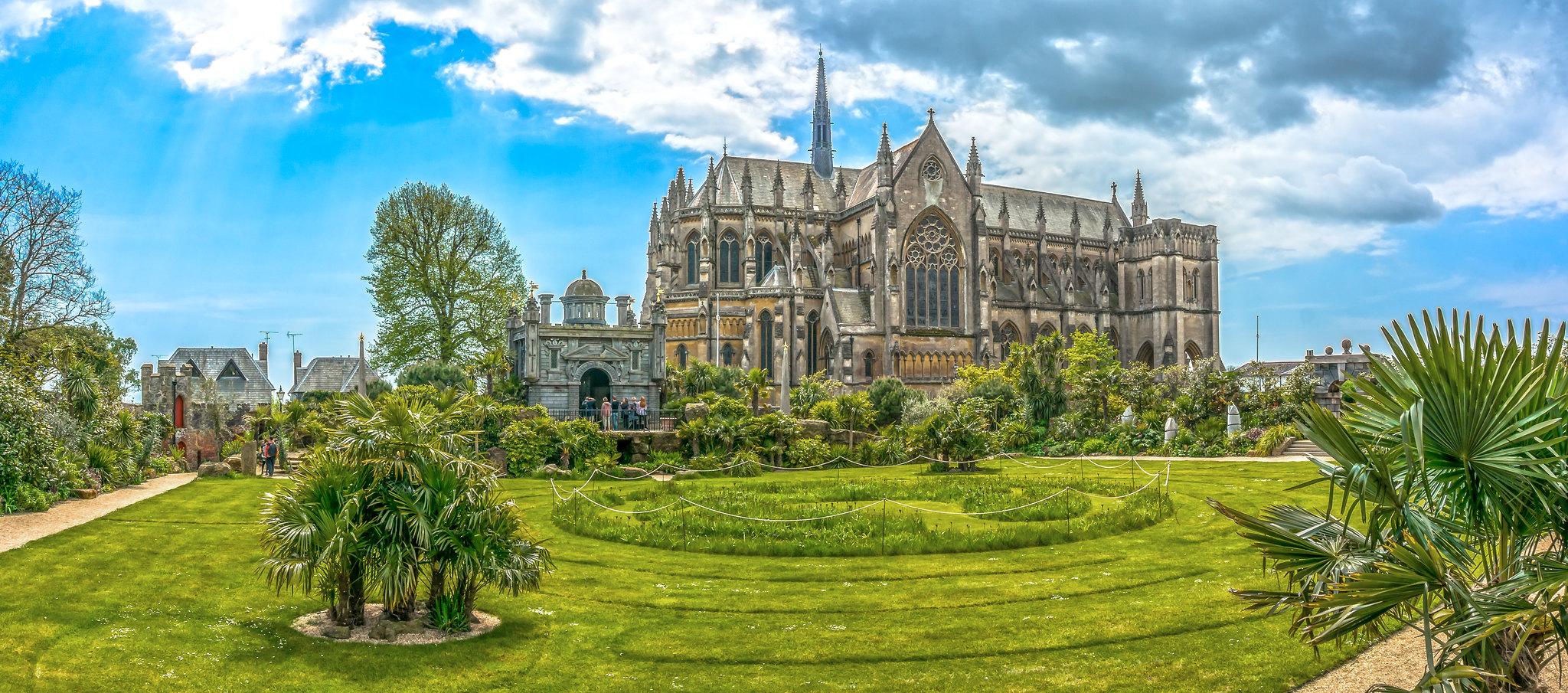Fitzalan Chapel
Arundel, Sussex
On the edge of Arundel Castle grounds, the private Fitzalen Chapel contains a profusion of tombs and monument to the Howard family.

Built on a hill, the Cathedral sits majestically overlooking the ancient town of Arundel.
Arundel, Sussex
Henry, 15th Duke of Norfolk, Earl Marshal was responsible for the commissioning of the present building in December 1868. The architect, Joseph Hansom is known principally for the invention of the Hansom Cab. Built on the crown of the hill where the South Downs meet the outskirts of the ancient town of Arundel, and dominating its western aspect, Arundel Cathedral is a landmark in the countryside of Sussex.
This great church owes its existence to the generosity and foresight of Henry, 15th Duke of Norfolk, Earl Marshal (referred to here as Duke Henry), who commissioned the building soon after this coming of age in December 1868. On 27th December 1869 work commenced under the architect, Joseph Aloysius Hansom, who also designed Birmingham Town Hall and numerous Catholic churches and convents. Difficulties were encountered with the foundations which necessitated sinking concrete supports as deep as 57 feet. In some respects it was found impossible to carry out Hansom's plans, notably the construction of the 280 feet spire where only the base which forms the northwest porch was completed. The church, of brick clad with Bath stone, was completed in little over three years and opened on 1st July 1873 dedicated to St Philip Neri.
Arundel, Sussex
On the edge of Arundel Castle grounds, the private Fitzalen Chapel contains a profusion of tombs and monument to the Howard family.
Arundel, Sussex
As part of Arundel's striking hilltop townscape, the parish church is eclipsed by more flamboyant buildings that are visible for miles around: notably the huge 'Victorianised' castle and the Roman Catholic cathedral.
Lyminster, Sussex
King Alfred is recorded as having bequeathed Lyminster to his nephew in 901, it was the site of a Benedictine nunnery, and the flint church we see today has Saxon origins as the present walls go back to about 1040.